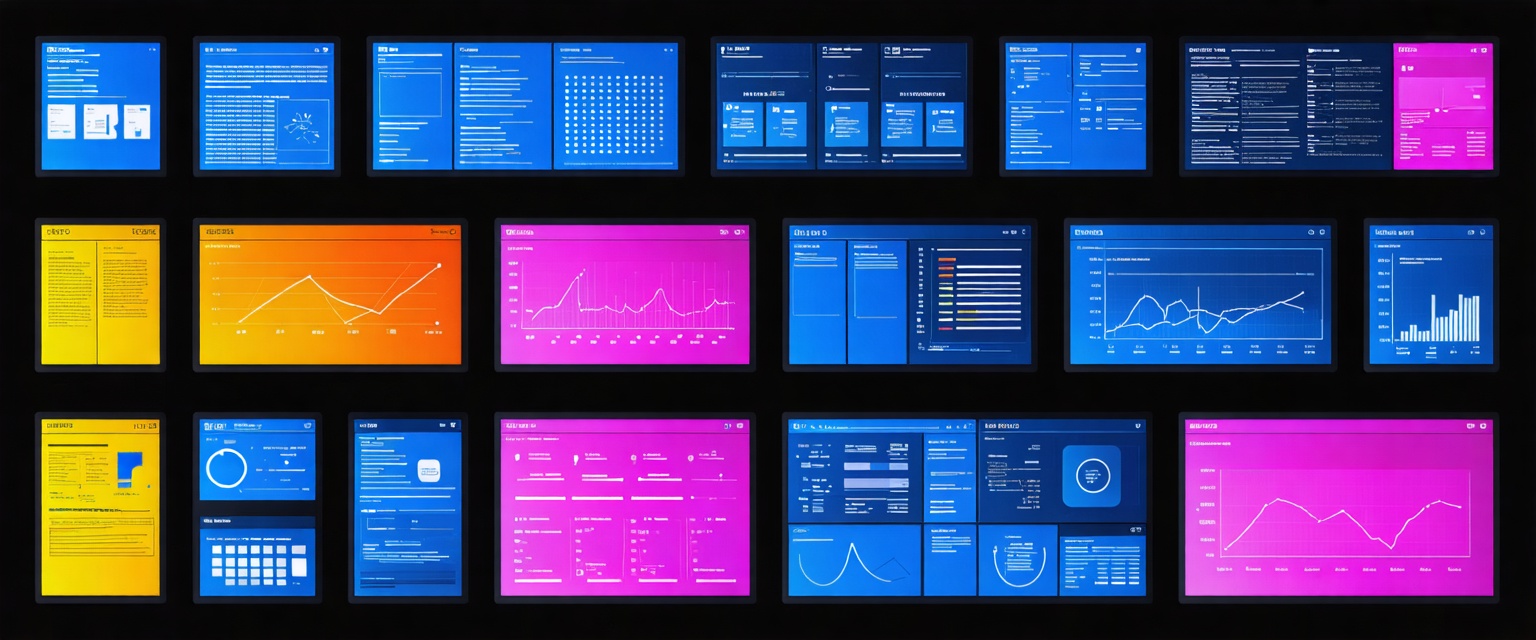Discover how AI agents automate building code requirement extraction, reducing errors and delays for compliance officers, improving project efficiency.
Code compliance officers spend hours digging through regulatory documents to extract building requirements. This slow, error-prone process delays approvals and increases project risk.
But with new advances in Agentic AI, automating requirement extraction is finally possible. AI agents can now scan, identify, and structure key codes instantly.
Datagrid’s data connectors make it easier than ever to connect to these systems and streamline compliance. This article explains how AI-powered extraction transforms the work of code compliance officers.
What Does Building Code Requirement Extraction Involve for Code Compliance Officers?
Building code requirement extraction means finding and isolating enforceable rules from regulatory documents. This isn't just scanning PDFs—it's pinpointing specific requirements hidden in complex texts that code compliance officers must enforce.
The extraction process pulls out key elements such as:
- Enforceable rules and regulations
- Specific conditions and thresholds
- Clause references and cross-references
- Required parameters (height limits, material specifications)
- Exception clauses and their applicability
From Paragraphs to Parameters
Building codes are wrapped in prose—walls of text describing conditions, thresholds, and exceptions. The extraction process turns this legal jargon into practical items: checklists, numeric thresholds, and exception flags.
Take this example: "Unless the building is under 12m tall, all multi-story structures must have a minimum of two fire exits per floor." This needs to be broken down into separate parameters: height threshold, building type, and fire exit requirements.
Common Document Sources for Compliance Officers
Building code requirement extraction typically works with various document types:
- International Building Code (IBC)
- State-specific amendments and addenda
- Local zoning ordinances and overlays
- Fire safety codes (NFPA standards)
- Accessibility guidelines (ADA requirements)
- Energy efficiency standards
These documents usually arrive as PDFs or scanned images. The lack of formatting standards creates another challenge, as most weren't designed for machine reading.
Why Extraction Workflows Are Foundational to Code Compliance
Building code requirement extraction forms the backbone of effective code compliance for officers responsible for enforcing regulations.
The Link Between Extraction and Approvals
Plan reviews depend on accurate rule interpretation. Miss or misinterpret one code requirement, and you're facing non-compliance, rejected submissions, or legal issues.
If you miss a fire safety clause, you might design something that puts people at risk and fails inspection.
AI-powered extraction tools support better decisions by capturing all relevant rules with proper context. Implementing AI-driven tools doesn't replace human expertise—it amplifies it.
Data Gaps in Existing Tools
Most compliance tools today don't solve the extraction problem. They function as static checklists or data entry portals, leaving humans to manually find, copy, and interpret rules.
Impact on Enforcement and Audits
Code compliance officers need specific rule citations to back their decisions. Manual extraction is slow and error-prone.
AI-assisted extraction gives officers instant access to exact code references with context and related clauses, making their enforcement actions defensible and precise.
Where Time Is Lost in Manual Building Code Analysis
Manual code analysis creates bottlenecks that delay projects and introduce errors that human eyes simply miss.
Clause Hunting and Scrolling Fatigue
Imagine scrolling through 500-page documents searching for specific requirements. This brain-draining task happens daily for code compliance officers.
Finding fire safety requirements for a commercial building might mean searching several chapters of the International Building Code, cross-checking local amendments, and reviewing NFPA standards. Each search can burn hours, and tired eyes miss critical details.
Cross-Code Reconciliation
Reviewing a single building plan often means juggling multiple sources with different structures:
- International Building Code for general requirements
- Local fire code for specific safety measures
- Zoning ordinances for height and setback restrictions
The challenge isn't just accessing these documents—it's mentally reconciling conflicting requirements. This becomes especially difficult when codes reference each other.
Manual Exception Mapping
Building codes love exceptions and conditional clauses. These little rule-changers often hide mid-sentence, demanding careful reading and mental tracking.
Consider this maze: "The maximum height shall be 60 feet, except where adjacent to a residential zone, in which case the maximum height shall be 45 feet, unless the building is set back an additional 10 feet for every story above four, in which case the original 60-foot limit applies."
Mapping these exceptions across dozens of code sections without making errors is practically impossible.
Version Drift Across Code Updates
Building codes evolve. Code compliance officers must verify which version applies to a project and track subtle language changes between editions.
This gets trickier with multi-year projects that might fall under different code versions at various stages.
Copy-Paste for Documentation
Compliance officers spend hours copying relevant code sections into reports, emails, and project documentation. This manual transcription introduces risks of typos and omissions.
Creating complete records means endless copying, formatting, and organizing—administrative tasks that steal time from actual code analysis.
How AI Agents Automate Building Code Requirement Extraction
AI agents use advanced technology to analyze, interpret, and structure code information quickly and accurately.
Ingesting and Structuring the Input
First, AI processes raw code text from various sources:
- Optical Character Recognition (OCR) turns scanned pages into machine-readable text
- Text normalization fixes formatting issues and inconsistencies
- Structural tagging identifies sections, tables, and multi-part clauses
This initial processing creates a foundation for deeper analysis, helping the AI navigate through document content, similar to how AI lead enrichment structures data for better insights.
Identifying Rule Candidates
AI agents use Natural Language Processing (NLP) to spot potential requirements:
- Syntax parsing finds sentence structures that typically signal rules
- Semantic pattern recognition helps AI understand rule patterns like "If X, then Y" or "Shall not exceed Z."
By optimizing data with AI agents, AI can catch nuanced requirements that basic systems or tired human reviewers might miss.
Linking Clauses to Context
Building codes contain interrelated rules. AI agents track these relationships by linking cross-references to figures, exceptions, footnotes, and appendices.
The AI creates rule "threads," forming comprehensive output that ensures extracted requirements maintain their full regulatory framework.
Structuring for Queryability
AI agents don't just extract text—they create structured data ready for integration:
- Requirements break down into specific fields (e.g., required clearance: 1.5m)
- Data formats follow standard schemas like JSON or CSV
- This structure enables direct integration with design software and automated checks
Continuous Feedback and Tuning
Modern AI agents get smarter with use. When compliance officers flag misinterpretations, this feedback fine-tunes the extraction algorithms.
The system grows more accurate for specific jurisdictions through learning, making each correction more effective and reliable.
Datagrid: AI-Powered Document Automation & Compliance for Construction
Construction teams drown in critical documents across projects. Datagrid's AI platform transforms this chaos into clarity with practical solutions. AI solutions streamline document processing, helping professionals meet compliance requirements and avoid costly delays.
Construction professionals must streamline document processing and automate database cleanup to meet compliance requirements and avoid costly delays. Here's how specialized AI agents can help:
Automated Code Requirement Extraction
Datagrid's AI agents scan thousands of regulatory documents simultaneously, extracting specific requirements without manual review. This saves compliance officers countless hours while ensuring no critical requirements are missed.
Smart Submittal Validation
AI agents automatically check material submittals against project specifications and code requirements, streamlining submittal cross-checking and flagging non-compliant items instantly. This ensures all materials meet standards without tedious manual comparison.
Real-Time Compliance Monitoring
The platform extracts obligations, deadlines, and requirements from contracts and codes, creating alerts for upcoming deliverables and potential compliance issues. AI agents improve construction management, helping project teams stay ahead of regulatory obligations.
Inspection Documentation Intelligence
Datagrid processes inspection reports across projects and authorities, organizing findings by code section and tracking resolution status. This helps teams systematically address compliance issues and improve project quality.
Version Change Detection
The system identifies and compares document revisions, highlighting meaningful changes between code versions. This ensures teams work with current regulatory information, reducing errors from outdated requirements.
Regulatory Deadline Management
Datagrid monitors expiration dates and requirements for permits, licenses, and certifications, generating alerts for renewals. This prevents costly lapses in necessary authorizations.
Compliance Documentation Automation
The platform automatically validates that project documentation satisfies jurisdiction-specific requirements, reducing approval delays by ensuring complete documentation before submission.
Simplify Construction Tasks with Datagrid's Agentic AI
Don't let data complexity slow down your team. Datagrid's AI-powered platform is explicitly designed for teams who want to:
- Automate tedious data tasks
- Reduce manual processing time
- Gain actionable insights instantly
- Improve team productivity
See how Datagrid can help you increase process efficiency.
Create a free Datagrid account.













